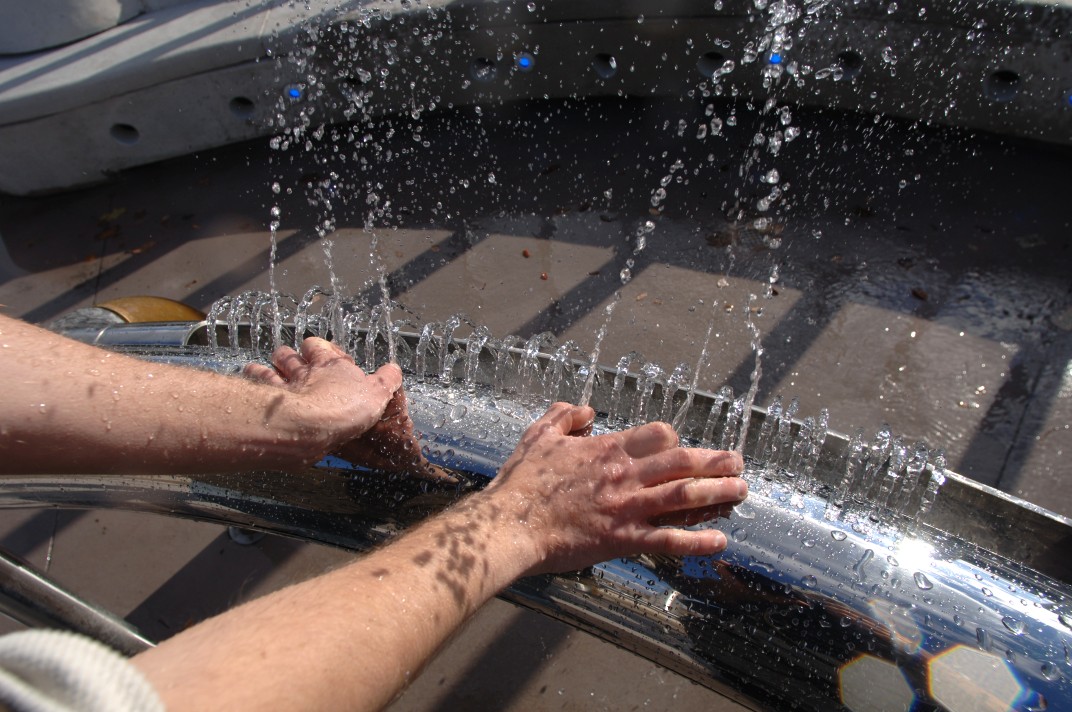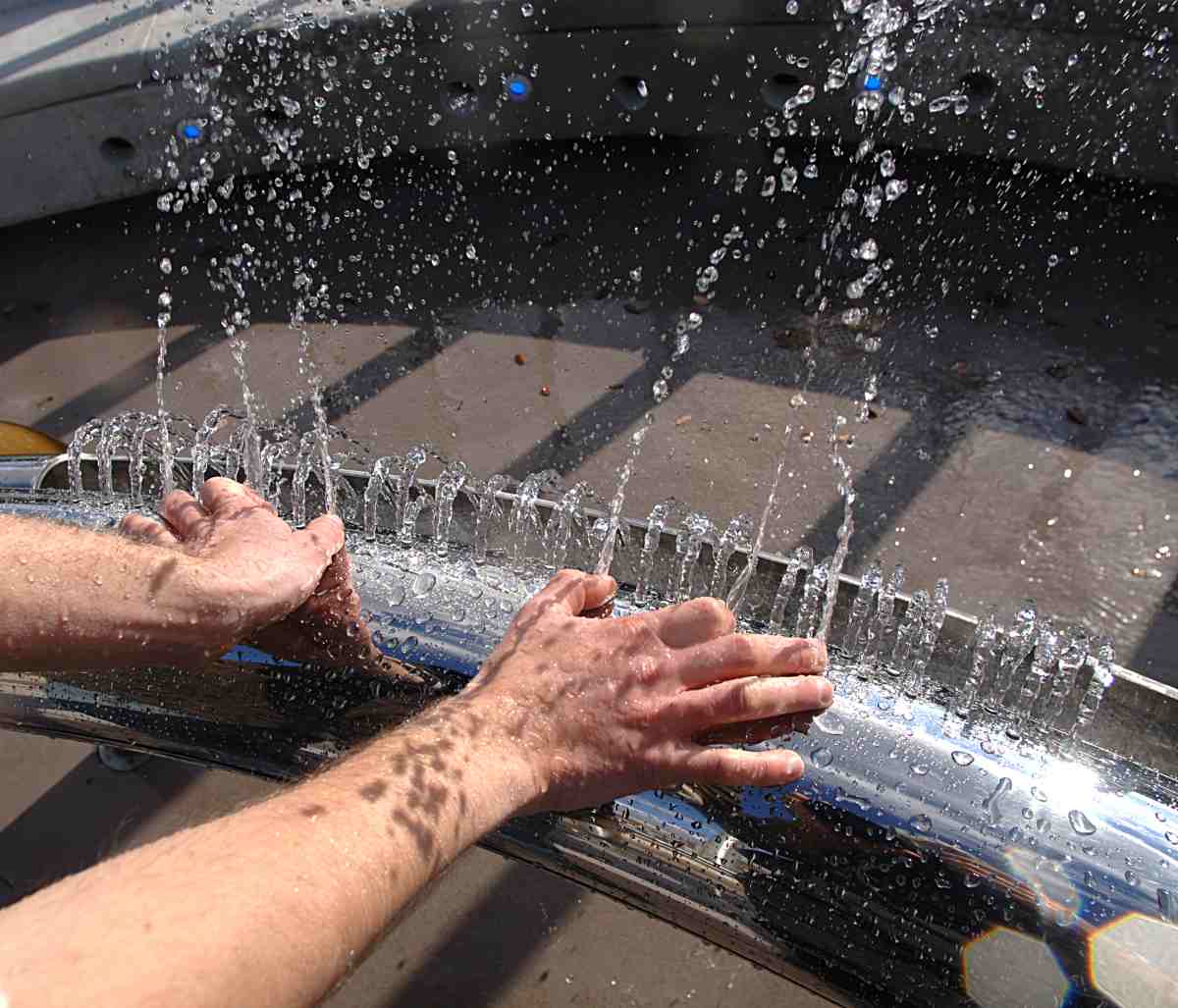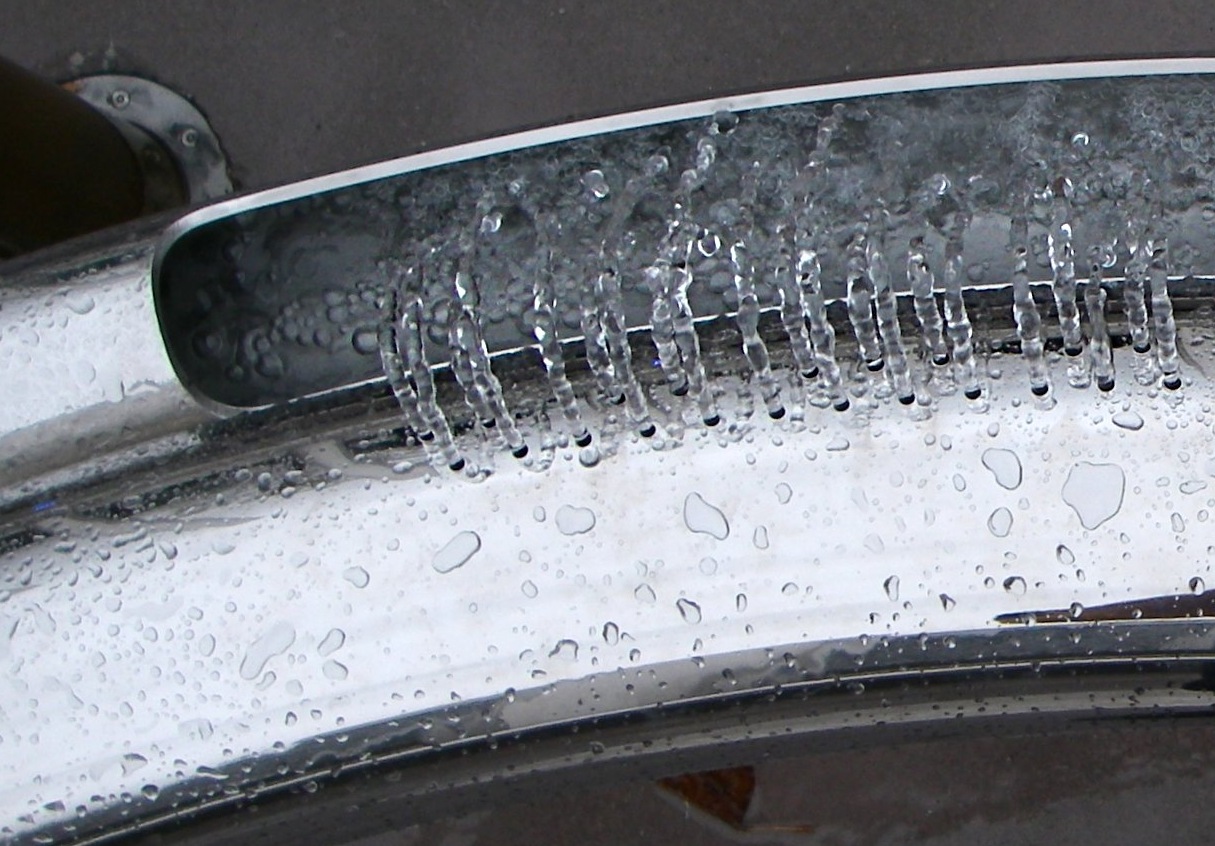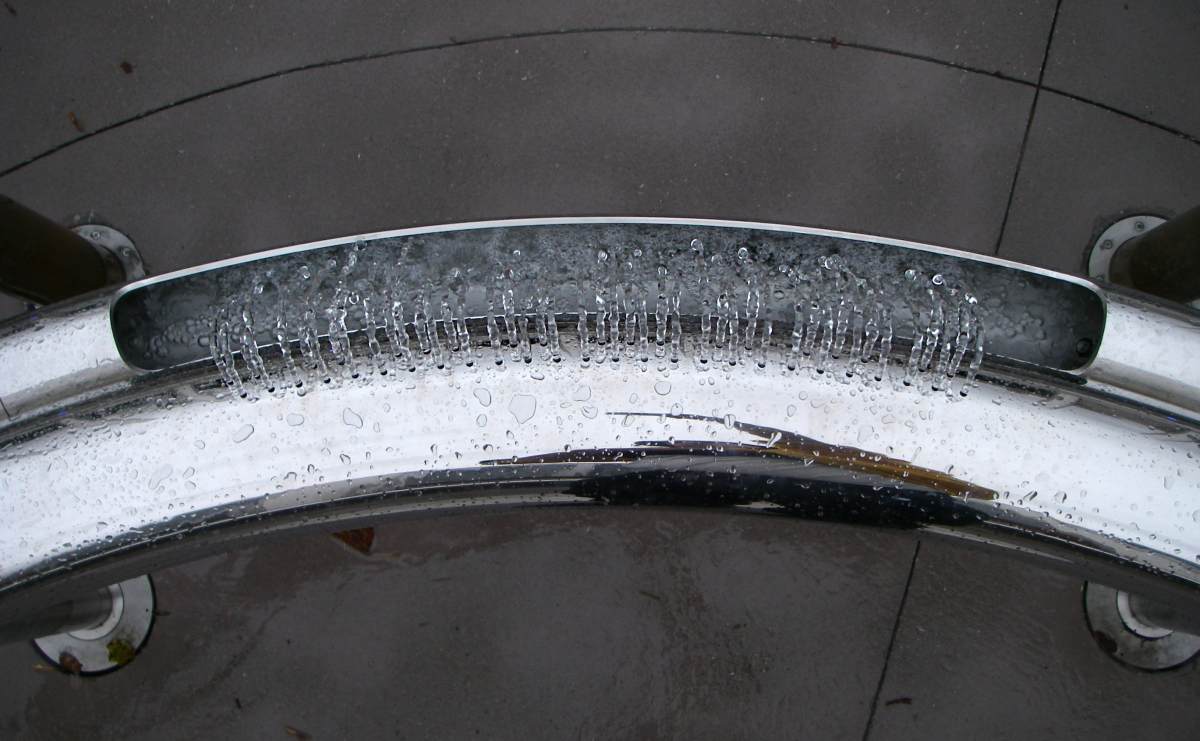 (full resolution 12 megapixel version here)
and
(full resolution 12 megapixel version here)
and cropped and processed version
cropped and processed version
 southnessie-leftside.jpg
southnessie-leftside.jpg
 southnessie full image
southnessie full image
The hydraulophone is similar to a woodwind instrument, but it runs on incompressible fluid (e.g. water) rather than compressible fluid (air). In this context hydraulophones are sometimes called "woodwater" instruments regardless of whether or not they are made of wood (as woodwind instruments are also often not made of wood).
Microtonal expression is possible through richly expressive water jets that are played like a flute. Moreover, the expression is polyphonic, letting one play the instrument with "polyphonic embouchure".
Since humans do not breathe water, the water must be "blown" into the hydraulophone by way of a pump which can be hand-operated, wind operated, water powered, or electric (i.e. an electric pump). Unlike woodwind instruments in which there is one mouthpiece at the entrance to the flute chamber, hydraulophones have "mouths" at every exit port from the chamber, which are played with the musician's fingers.
Whereas flutes have one fipple mechanism for the mouth of the player, along with several finger holes that share the one fipple mechanism, the hydraulophone has a separate mouth/"mouthpiece" for each finger hole. A typical park-hydraulophone for installation in public spaces has 12 mouths, whereas a concert hydraulophone typically has 45 mouths.
For more information on hydraulophone, see:
 (full resolution 12 megapixel version here)
and
(full resolution 12 megapixel version here)
and cropped and processed version
cropped and processed version
 southnessie-leftside.jpg
southnessie-leftside.jpg
 southnessie full image
southnessie full image